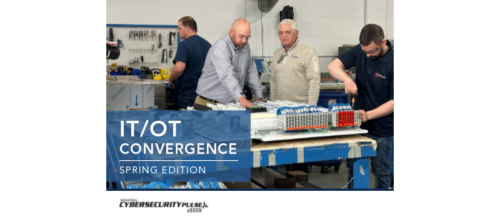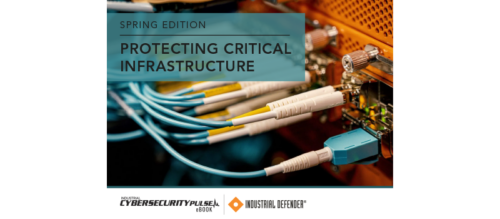Implementing analytics for Big Data applications with PC-based control systems
Control engineers can use PC-based control systems to take advantage of Big Data analytics to help them make real-time insights for their companies in the Internet of Things (IoT) era.
Demand for companies to reach the best decisions based on real-time data insights have never been greater. The responsibility to apply the right technologies to make all this happen often falls right at the feet of controls engineers. Fortunately, there are ways for them to implement Big Data analytics that aren’t too far out of the comfort zone of programmable logic controller (PLC) programmers if they use PC-based control systems.
As PC-based control platforms have evolved into the Internet of Things (IoT) era, the walls have come down in terms of what the roles are for automation controllers in machines and plants. As far back as the mid-90s, one PC-based controller could assume the combined roles of PLC, motion controller, and human-machine interface (HMI). This eliminated previously existing costs and the inefficiencies of relying on multiple hardware, software, and networking platforms. Today, it is possible for one industrial PC (IPC) to assume the roles of IoT gateway, edge computing device, and data analytics platform.
While deploying analytics onboard machine controllers is more typical in edge computing scenarios, additional analytics code developed in the same environment also can be run concurrently in cloud services, such as Microsoft Azure or Amazon Web Services (AWS). Communication standards that arose first in the information technology (IT) world, such as message queuing telemetry transport (MQTT), are also at play in manufacturing environments today, as well as the standards associated with industrial applications like OPC UA, which means scalability is assured.
There are many benefits to running analytics software directly on the machine controller as a supplement to higher-level, standalone platforms that may run in the cloud. However, the expertise and skillset of the typical controls engineer may not overlap heavily yet with the latest IoT technologies finding their way into manufacturing environments.
By applying Big Data analytics tools in the same engineering platform as the one used for PLC, motion control, and HMI, engineers shorten their learning curve and stack the deck in favor of successful implementations when many are rolling out pilot projects for their first true Industrial IoT (IIoT) and Industrie 4.0 concepts. This also protects and enhances machine builders and manufacturers’ intellectual property without giving away a new revenue stream or competitive advantage to an IoT services provider or another third-party.
Using PC-based control technology, analytics code can be run within the overall machine control code for online and offline analyses without missing any functionality or connectivity. Graphical analytics sequences are developed in a software workbench, which can be converted into IEC 61131-3 languages so the code is easy to understand by controls engineers and PLC programmers and ensures that those analytics sequences have the ability to run in the PLC for 24/7 monitoring. Fortunately, PC-based control systems are available and can adopt computer science and IT programming tools.
This can be expanded to include any other software platform running on a PC. Further, PC-based systems can enhance analytics applications for machine learning and optimization. These powerful algorithms also can run in real-time alongside the PLC and motion control on PC-based platforms. Regardless of the mix of tools needed to do the job, conducting as much engineering work as possible in one environment is a solid advantage to ensure more efficient project development.
Machine manufacturers who have implemented their machine application with this kind of PC-based control technology do not need new tools to run the appropriate analyses. With accompanying configuration tools, users of analytics toolsets offered in PC-based control systems can sift through the data as analytics loggers acquire it.
Available software libraries contain function blocks for several types of cycle analysis such as data classification, minimum, maximum, and average cycle times, value integrators, etc. They also contain function blocks for threshold value monitoring, providing the ability to document the number of threshold value violations. Other function blocks can analyze signal amplitudes and store indicators such as maxima and minima.
Many variables can be selected from a large data package in order to graphically display them, for example, with a "post-scope configuration" using software-based scope tools. The configurator also provides some algorithms from the analytics PLC library to examine the data offline for limit values or to perform runtime analyses of machine cycles. The total running time of a machine cycle—the shortest, longest, and average running times—can be determined easily. The results of any important data can be displayed on dashboards produced for the machine HMI and in dashboards viewed on other devices.
When surveying the current IoT solutions available in PC-based control architectures, PLC programmers can create new platforms or retrofit existing systems in order to crack the Big Data puzzle. This can be done without losing control of a major aspect of modern controls design or by adding layers of complexity from standalone IoT and analytics systems.
Daymon Thompson, automation product manager, North America, Beckhoff Automation. Edited by Chris Vavra, production editor, Control Engineering, CFE Media, cvavra@cfemedia.com.
MORE ANSWERS
Keywords: Big Data, IIoT, control systems
PC-based control systems can help control engineers looking to take advantage of Big Data analytics for real-time insights.
Applying Big Data analytics tools for programmable logic controllers (PLCs), motion control, and human-machine interfaces (HMIs) shortens the learning curve for controls engineers.
PLC programmers can create new platforms or retrofit existing systems in order to crack the Big Data puzzle.
Consider this
What other instruments and technology can be used to provide control engineers with Big Data analytics?
ONLINE extra
Learn more about Beckhoff’s TwinCAT product solutions here.
Do you have experience and expertise with the topics mentioned in this content? You should consider contributing to our CFE Media editorial team and getting the recognition you and your company deserve. Click here to start this process.





